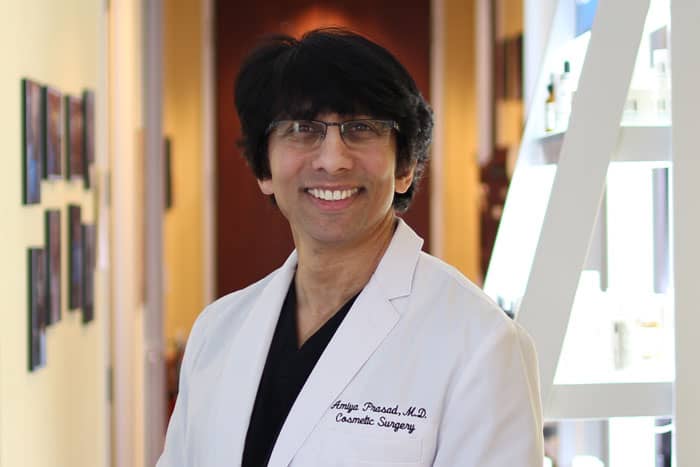Treatments for Hair Loss at Temples for Men and Women
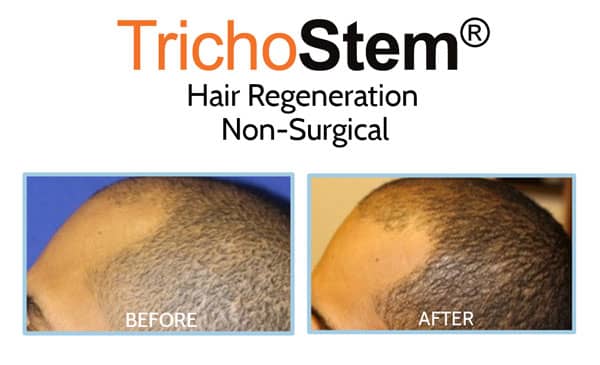
Hair loss or hair thinning at the temples in males and females can be understandably stressful, as people who never considered pattern hair loss affecting them may suddenly notice this issue. I’ll explain the possible causes of hair loss in the temporal region, and how it can be treated.
I founded TrichoStem Hair Regeneration Centers, which is based on a technology I originally discovered while trying to improve the survival of hair grafts for better results from surgical hair transplants. I applied a material called extracellular matrix by ACell, which I was already using to expedite the healing of facelifts and other surgical incisions, to help heal transplanted hair grafts.
To my surprise, I found that native hair that wasn’t transplanted grew thicker. After developing and refining this discovery into a more predictable treatment protocol, the TrichoStem Hair Regeneration treatment has been helping male and female pattern hair loss patients coming from around the world, without the need for hair transplant surgery.
What is Pattern Hair Loss: An Overview
Pattern hair loss makes up about 95% of hair loss cases in men and women. Pattern hair loss is a genetic condition that’s hardwired into a person’s DNA, so it’s not caused by external factors like wearing a hat, or internal factors like diet.
Hair Loss at Temples in Males
Temple hair thinning is more noticeable in men than in women. Male pattern hair loss can start with gradual hair thinning at the temples before it causes visible recession at the hairline. While temple recession is often an early indicator of pattern hair loss in men, it does not always start at the temples.
It is possible for temple recession to happen at the same time as a receding frontal hairline. Male pattern hair loss can also occur at the crown before affecting the frontal hairline or temples.
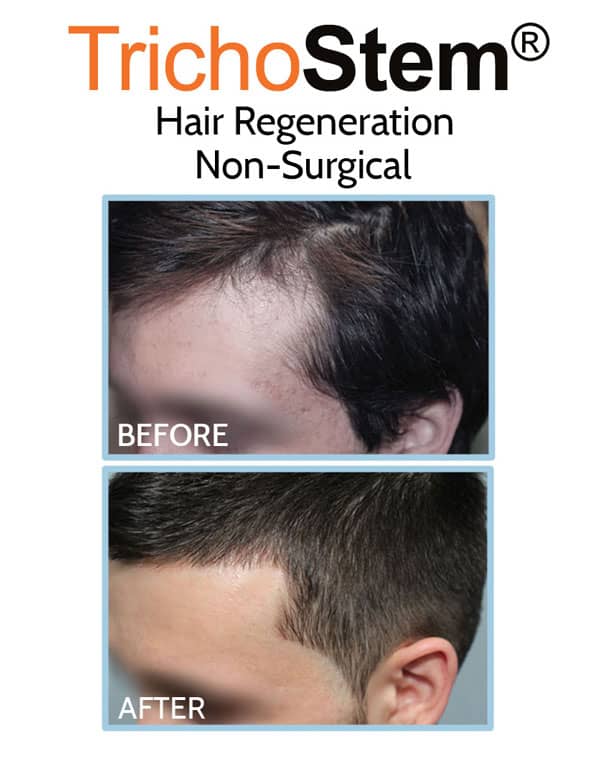
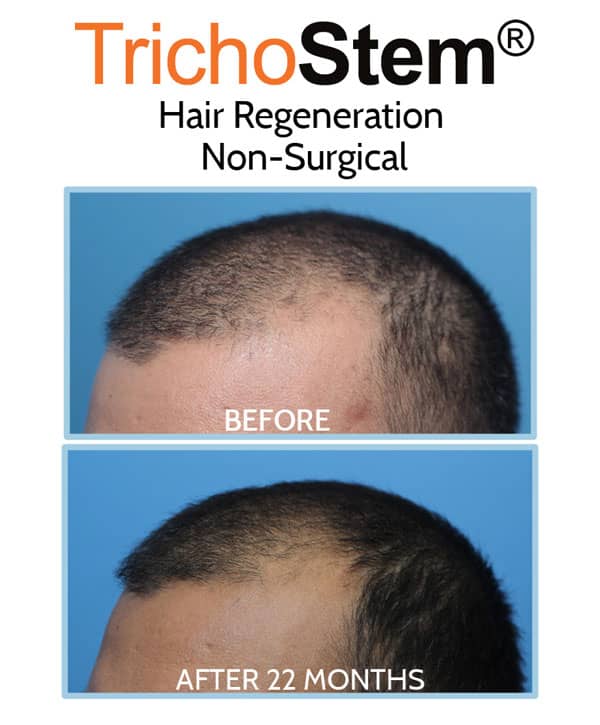
While there are different manifestations of male pattern hair loss for individuals, many men often first notice it at the temples. Some men have their pattern hair loss manifest similar to female pattern hair loss, with the whole scalp experiencing diffuse thinning, which includes the temples, hairline, crown, and mid-scalp simultaneously.
Hair Thinning in Men Treatment
Temple hair thinning for men can be treated, ideally before progressive thinning gets worse. A major factor of male pattern hair loss is the genetic predisposition of having scalp sensitivity to the form of testosterone called dihydrotestosterone, or DHT. Men with a scalp sensitivity to DHT experience progressive hair thinning.
A prescription DHT-blocker like finasteride can slow progressive hair thinning, which works by inhibiting the enzyme 5-alpha reductase that is responsible for the conversion of testosterone into dihydrotestosterone.
DHT-blockers like finasteride have a limited effect on actually thickening thinning hair, but this shortcoming can be addressed by our TrichoStem Hair Regeneration treatment to thicken thinning hair at the temples, and other areas of the scalp.
With only a single injection treatment session, we have thickened thinning hair in men experiencing pattern hair loss, especially in men who are too young for hair transplant surgery, or who would prefer not to have a surgical hair transplant.
Hair transplant surgery is limited in the number of potential donor hairs for hair transplantation, and surgical hair transplants can only place a limited number of grafts per square centimeter of scalp, so thickening existing thinning hair, and maximizing growth from dormant hair follicles currently not growing hair with TrichoStem Hair Regeneration, can exceed the results of one, or even two hair transplant surgeries.
Some male patients with more advanced hair loss may get a second treatment, which we call the booster, 15–24 months after the first, with results lasting 3-5 years. Male patients are still prescribed a DHT-blocker, particularly younger men with high DHT sensitivity, as TrichoStem Hair Regeneration is not a DHT-blocker or a replacement for finasteride. Concurrent use of finasteride can maximize results as well as the longevity of the injection treatment.
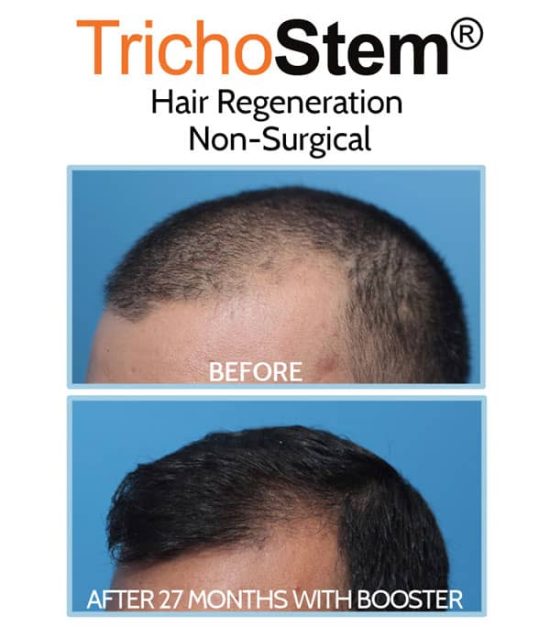
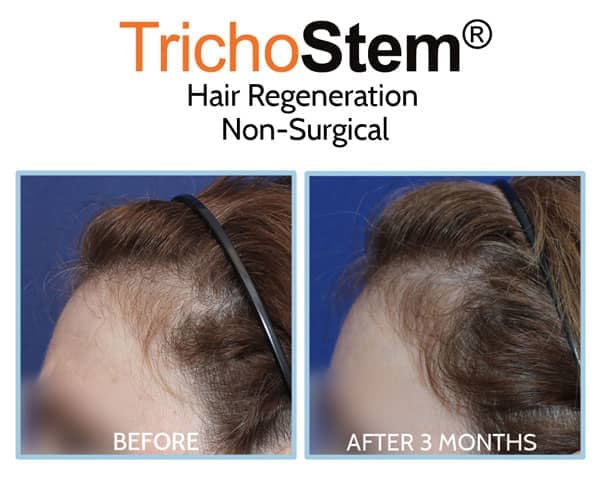
Thinning Hair at Temples Female
Temple hair thinning is less noticeable in female pattern hair loss, which generally manifests with diffuse hair thinning throughout the whole scalp. Temple hair thinning can be noticed in women as hair density decreases in this region, along with the whole top of the scalp.
Unlike male pattern hair loss where the hairline gets progressively higher, a receding hairline does not manifest with female-pattern hair loss. Use of hairbands, as well as pulled back hairstyles like ponytails that isolate the temples and hairline, can make temple hair thinning and decreased density more noticeable in women with pattern hair loss. The diffuse thinning of female pattern hair loss can also be treated with the TrichoStem Hair Regeneration injection treatment. The treatment can increase density and thickness in the temple area, with most patients only requiring just one treatment session.
The top of the scalp that is most affected by diffuse hair thinning can see a dramatic improvement in hair coverage by thickening thinning hair and stimulating growth from hair follicles that are still viable but currently not growing hair.
Women, who have fewer hair loss treatment options than men, can stop using minoxidil as well as spironolactone after our injection treatment. Since DHT is not a significant factor in women with pattern hair loss like it is for men, I generally don’t prescribe DHT-blockers like finasteride for women, even if they don’t have the injection treatment.
Temporal hair recession in women can happen when hair thins due to menopause. Menopause causes a drop in estrogen levels, which is an important hormone for hair growth and thickness in women.
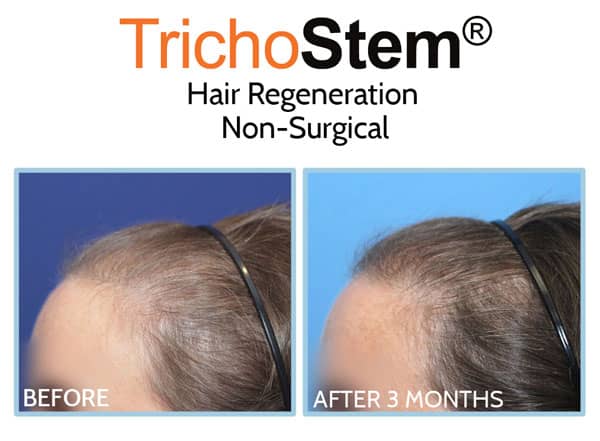
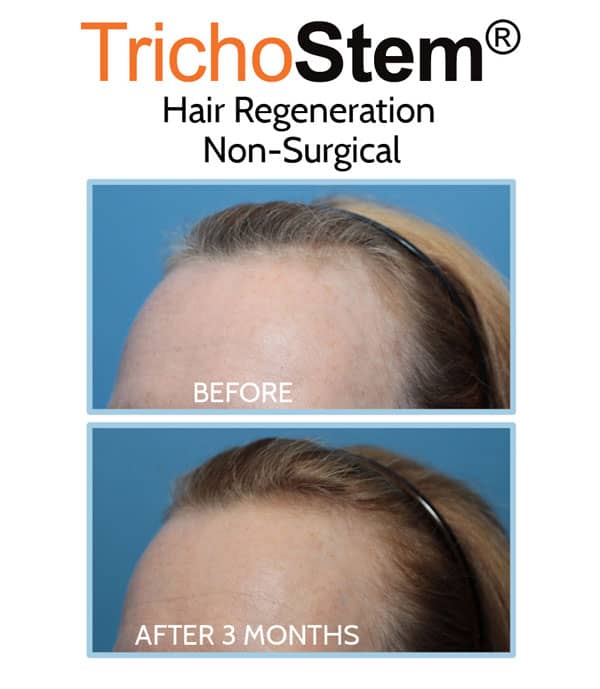
The decrease in estrogen can cause temporal hair thinning in women that isn’t seen with female pattern hair loss in younger women. It is menopause that pushes the incidence of pattern hair loss in women from about 30% of women under age 50 experiencing pattern hair loss, but the increase occurs after age 50 with about 50% experiencing pattern hair loss.
How to Regrow Hair at Temples in Women
Menopause-related temple recession, as well as scalp hair thinning can be treated with a similar approach to female pattern hair loss. The TrichoStem Hair Regeneration treatment is effective in treating thinning hair in menopausal women by inducing thinning hair to shed and renewing a healthier hair growth cycle so that thicker hair can grow in its place.
The healthier hair growth cycle also reinvigorates hair follicles that are still viable, but haven’t been growing hair for more hair growth.
While the TrichoStem Hair Regeneration treatment can renew a healthier hair growth cycle by triggering the body to produce its own adult stem cells, the treatment is not a hormone therapy, so it can’t be used to stimulate more estrogen production in the body.
Women with menopause-related hair loss may gain additional benefit in hair growth with hormone replacement therapy, which is usually prescribed by their gynecologist.
Why Am I Losing Hair at My Temples?
Temporal hair thinning can be the first sign of pattern hair loss, or part of pattern hair loss that is also affecting other parts of the scalp. We are at a time where thinning hair at the temples as well as other parts of the scalp can be treated, unlike in the past when surgical hair transplantation was the only treatment for pattern hair loss. By addressing the causes of hair thinning with active management such as DHT-blockers for men, and treatments like TrichoStem Hair Regeneration for men and women, temporal hair loss can be managed effectively, hair density and thickness can be maximized, and there is more scalp coverage than has been possible in the past with surgical hair transplants.
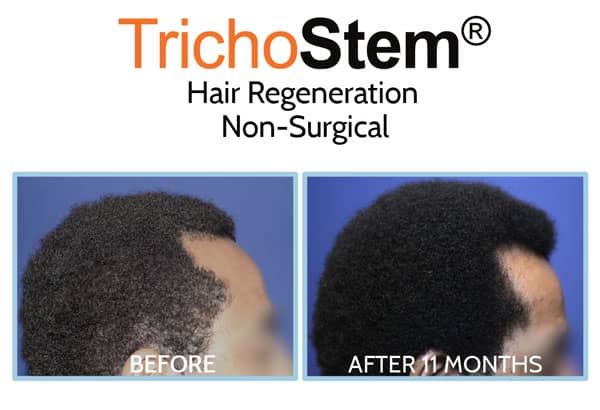
Best Hair Loss Treatment Manhattan, NYC and Long Island, New York
Dr. Amiya Prasad is a Board-certified cosmetic surgeon and a Fellowship-trained oculofacial plastic and reconstructive surgeon. He’s been in practice in New York City and Long Island for over 25 years, where he performed hair transplant surgery since the early days of medical practice. He eventually developed TrichoStem Hair Regeneration, a non-surgical alternative to hair transplant surgery. If you would like specific recommendations for your case, or guidance for your situation, fill up the form below for a consultation or call any of our offices at (212) 265-8877 in Manhattan, New York City; (516) 742-4636 in Garden City, Long Island; or (703) 356-1336 in Vienna, Virginia.

